International Primate Day
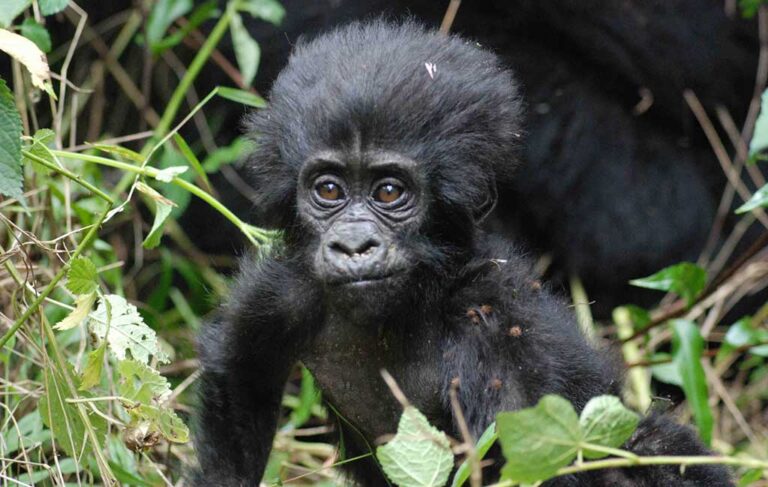
This Friday, 1st September is International Primate Day – a dedicated occasion to honor, learn about, and take action for our planet’s diverse array of primates. With just a few hours left, it’s time to gear up for a day filled with awareness, appreciation, and advocacy for our closest relatives in the animal kingdom.
Primates, ranging from charismatic chimpanzees and the gentle gorillas to the elusive monkeys which share a unique connection with humans due to their striking similarities in behavior, intelligence, and genetic makeup. They inhabit various ecosystems around Uganda and Rwanda, from lush rainforests to arid savannas, playing vital roles in maintaining ecological balance.
To celebrate this occasion, we would like to highlight some of the wonderful primates you can encounter on your safaris in both countries.
Chimpanzees
Chimpanzees, scientifically known as Pan troglodytes, are captivating and intelligent primates that share approximately 98-99% of their DNA with humans. This genetic similarity places them among our closest living relatives, offering a unique opportunity to gain insights into our own evolutionary history and behavior. Found in the forests and savannas of sub-Saharan Africa, chimpanzees exhibit complex social structures, tool usage, and communication.
In Uganda, they can be tracked in the following areas; Kibale National Park known as the “Primate Capital of the World,” which is a haven for chimpanzee lovers, Budongo Forest Reserve located in Murchison Falls National Park and the Kyambura Gorge in Queen Elizabeth National Park. In Rwanda, they can be tracked in Nyungwe National Park.
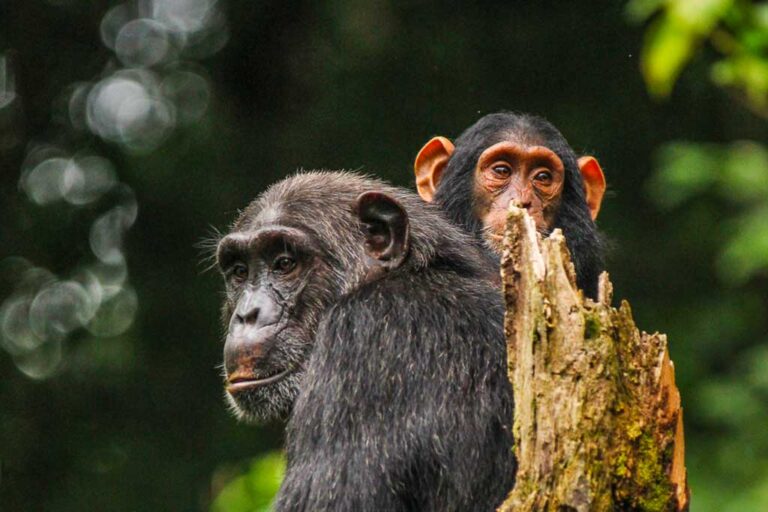
Gorillas
Gorillas are some of the largest and most intriguing primates inhabiting the forests of central and eastern Africa. These majestic creatures have captured the imagination of people around the world due to their impressive size, social dynamics, and striking resemblance to humans.
In Rwanda’s Volcanoes National Park and Uganda’s Bwindi Impenetrable Forest National Park, visitors are guided by knowledgeable rangers and trackers who ensure a safe and respectful experience for both humans and gorillas. Trekkers hike through dense forests, traversing challenging terrain, in search of the gorilla families that call these areas home. The intimate interaction allowed during these visits is carefully regulated to prevent undue stress on the gorillas and minimize any potential transmission of human diseases.
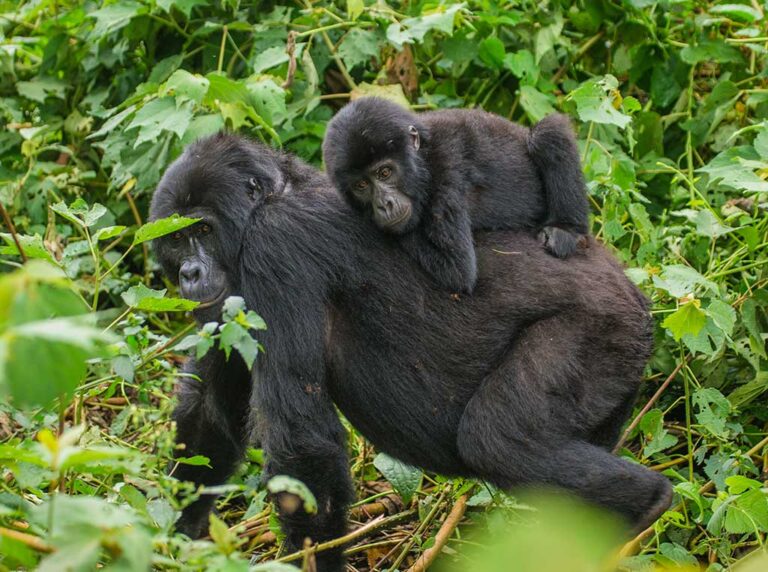
Golden Monkeys
Nestled within the lush landscapes of Uganda and Rwanda, the golden monkeys (Cercopithecus kandti) are a captivating species that paint the forests with their vibrant colors and playful antics. These remarkable creatures are a unique subspecies of the blue monkey and are endemic to the Albertine Rift region of East Africa. Renowned for their stunning appearance and intriguing behaviors, golden monkeys have captured the hearts of both locals and tourists.
In Uganda, these playful creatures can be tracked in the dense Mgahinga National Park and Volcanoes National Park in Rwanda.
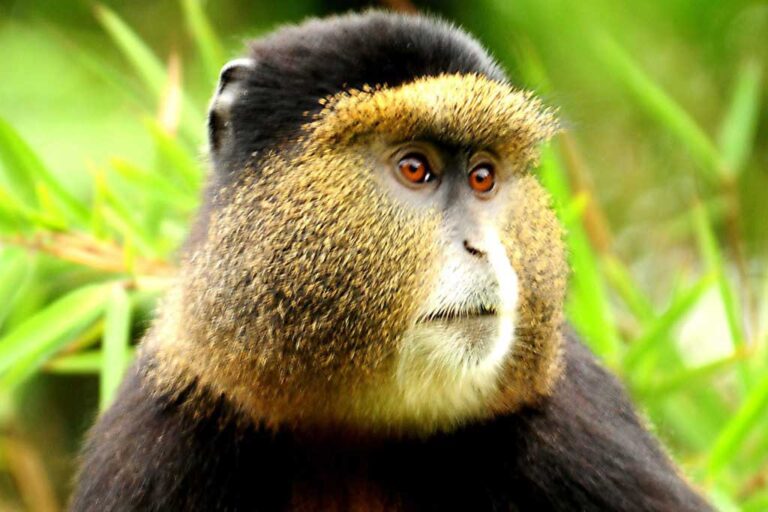
Vervet Monkeys
Vervet monkeys biologically known as Chlorocebus pygerythrus are medium-sized primates native to Africa. These monkeys typically have a grayish-green to yellowish-green coat, with a white belly and a black face. Their faces are adorned with distinctive white markings around the eyes and a black-bordered white band on their foreheads.
Vervet monkeys are also known for their playful antics, engaging in wrestling matches, tree-hopping races, and mock fights that are both entertaining and vital for honing their survival skills.
In Uganda, they are found in the Bigodi wetlands of Kibale Forest National Park, Semliki National Park, and Nyungwe National Park in Rwanda.
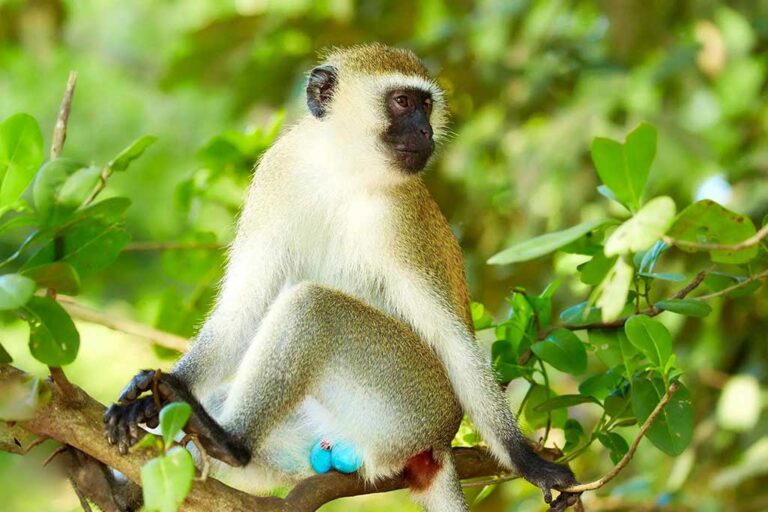
Red-Tailed Monkeys
Red-tailed monkey also known as Cercopithecus ascanius graces the treetops in the Vibrant landscapes of Uganda and Rwanda. These charming creatures bring a touch of color and character to the forests, captivating the hearts of those fortunate enough to encounter them.
They are often found in the same habitats as other primates like chimpanzees and colobus monkeys, creating a rich ecosystem of biodiversity. As the name suggests, red-tailed monkeys are recognized by their striking red tails that stand out against their dark fur. Their faces are adorned with white fur around the eyes, adding to their unique and endearing appearance. They can be spotted in Kibale National Park and Nyungwe National Park in Rwanda.
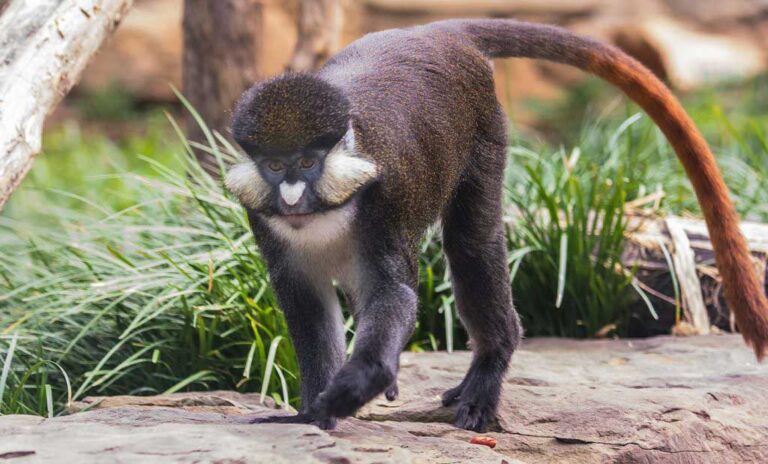
Black and white colobus monkeys
The White Colobus Monkey (Colobus guereza), also known as the Guereza colobus or is known for its striking appearance, social behavior, and ecological significance,
The most remarkable feature of the White Colobus Monkey is its contrasting black and white fur, which gives it its distinct appearance. While the base coloration is predominantly black, these monkeys possess a mantle of long, flowing white hair that drapes down their back, creating a stunning contrast. They also have a tuft of white hair at the tip of their tail, which adds to their unique appearance.
In Uganda, they can be sighted in Kibale National Park, Bwindi Impenetrable National Park, and Semliki Wildlife Reserve, while in Rwanda, you can find them in Nyungwe National Park.
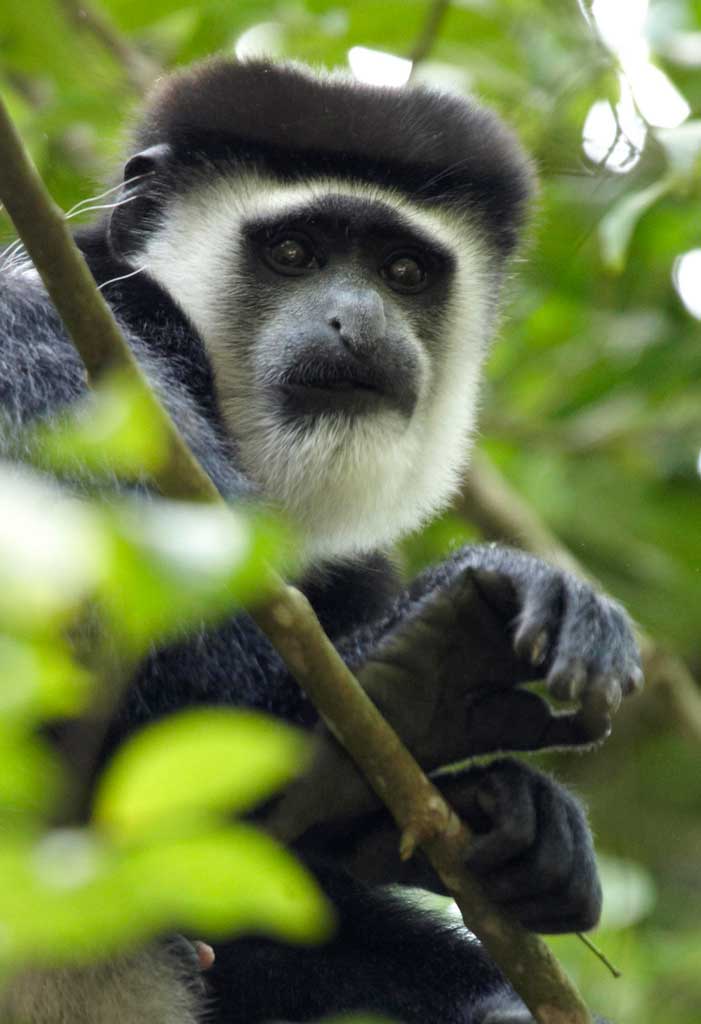
Red Colobus Monkeys
Red colobus monkeys scientifically known as Procolobus badius, are a charismatic and intriguing group of primates found in various forests and wooded habitats.
These are medium-sized primates, typically weighing between 5 to 15 kilograms depending on the species. They possess a prehensile tail that is often longer than their body, which helps them balance as they navigate the tree canopy. Their most distinctive feature is their vibrant red or reddish-brown coat, which can vary in shade between species. This coloration serves as camouflage within the dappled sunlight of their forest homes.
In Uganda, these monkeys are primarily distributed in Kibale, Semliki, and Bwindi Impenetrable Forest.

The grey-cheeked mangabey
Grey-cheeked mangabeys also biologically known as (Lophocebus albigena) are medium-sized monkeys with distinctive features that set them apart. Their name aptly describes their most prominent characteristic—a gray patch of fur on their cheeks that contrasts with the rest of their dark pelage. This coloration is complemented by a silvery-white crown on their head. With a slender, agile body and a long, expressive tail, these mangabeys are well-adapted to their arboreal lifestyle, allowing them to deftly navigate the forest canopy.
In Uganda, they can be found in protected areas such as Kibale National Park, Bwindi Impenetrable National Park, Semuliki National Park, and Nyungwe National Park in Rwanda.
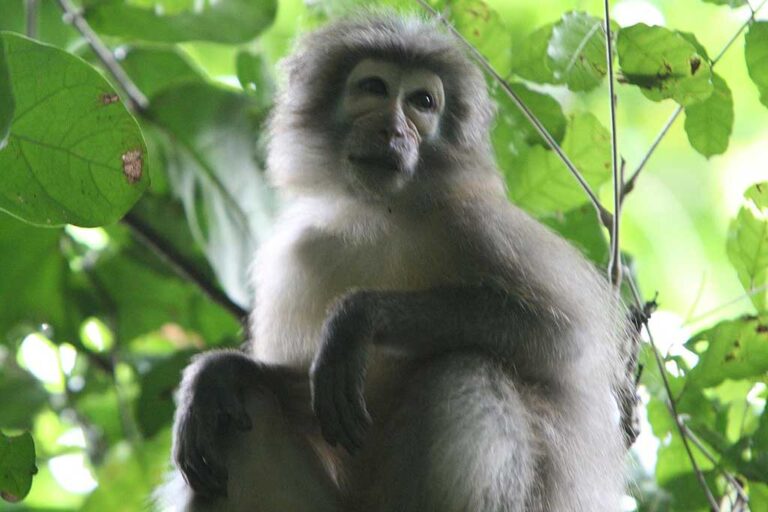
Many of these incredible primates are facing unprecedented challenges, largely due to habitat loss, poaching, and disease. Deforestation, driven by logging, agriculture, and mining, has led to the destruction of their natural habitats. Additionally, they are vulnerable to diseases transmitted by humans, which can have devastating impacts on their populations. Conservation efforts involve protecting their habitats, enforcing anti-poaching measures, and promoting eco-tourism as a sustainable means of supporting local communities and gorilla conservation.
International Primate Day provides a platform to acknowledge these challenges and rally support for their conservation.
The best way to support the habitat and conservation of these primates is through tourism. Having tourists come to visit our national parks and pay tracking fees enables the preservation of their unique habitats and the survival of the species.
Book your primate trekking safari today by contacting us on i[email protected]
